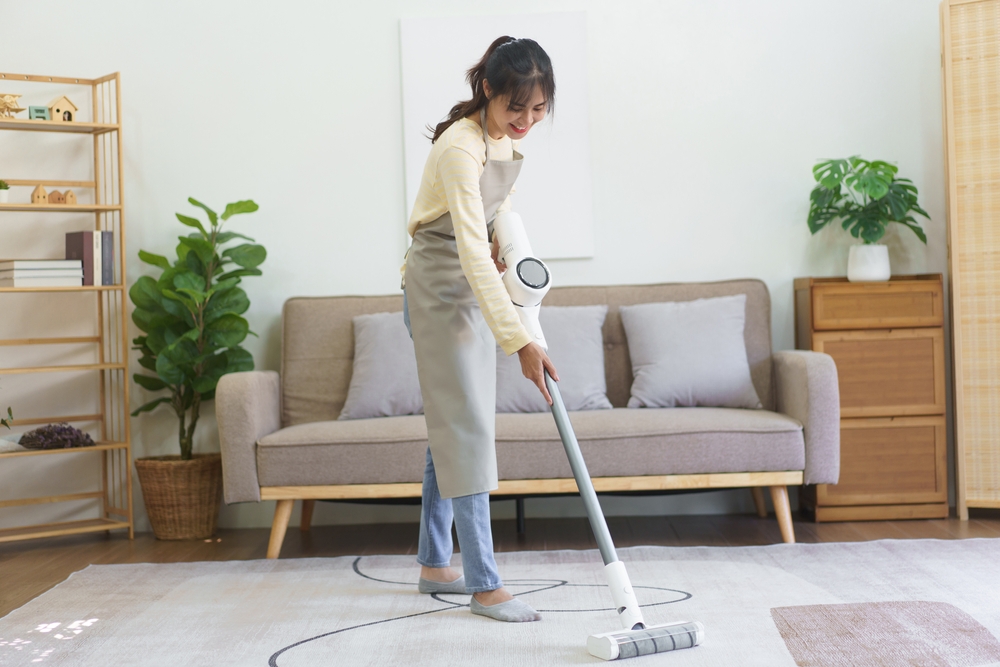Gypsum plaster is widely used in homes due to its smooth finish, durability, and aesthetic appeal. It is commonly applied on walls and ceilings, creating a flawless surface for painting and decorating. However, maintaining gypsum plaster can be a bit tricky if you’re not familiar with the necessary steps. Whether you’ve just had your walls plastered or are dealing with an older installation, taking care of gypsum plaster ensures that it stays intact and looks pristine for years. In this guide, we’ll walk you through the best practices for maintaining gypsum plaster at home, preserving its beauty and longevity.
1.Regular Cleaning for a Smooth Finish
One of the easiest and most effective ways to maintain gypsum plaster is through regular cleaning. Over time, dust, dirt, and stains can accumulate on the surface, making it appear dull and unkempt. To clean your gypsum plaster, use a soft cloth or microfiber duster to wipe down the surface regularly. Avoid harsh cleaning products that could damage the plaster, and instead opt for a mild detergent mixed with water if more stubborn stains arise. Always remember to avoid scrubbing too hard to prevent surface damage.
2.Avoid Direct Impact and Physical Damage
Gypsum plaster is relatively sturdy, but it can be prone to cracks or dents if exposed to direct impact. To ensure your plaster remains intact, avoid pushing heavy furniture against the walls or hitting the plastered surfaces with sharp objects. If you need to move furniture, do so with care, and protect the walls with corner guards or soft padding. Additionally, children or pets can inadvertently cause scratches or damage to plastered surfaces, so be mindful of their activities around the walls.
3.Seal Cracks Immediately
Gypsum plaster is highly susceptible to cracking, especially when exposed to extreme temperature fluctuations or structural movements. Cracks, even small ones, should be addressed immediately to prevent water or dirt from seeping in and causing further damage. To seal a crack, first clean the area to remove debris and dirt. Then, use a joint compound or plaster filler to fill in the crack. Smooth the surface with a putty knife and allow the compound to dry before sanding it smooth. Once the patch is completely dry, you can repaint the surface for a seamless finish.
4.Avoid Excess Moisture Exposure
Excess moisture can be detrimental to gypsum plaster, leading to swelling, mold growth, or weakening of the structure. It’s important to avoid water exposure as much as possible. In areas prone to moisture, such as bathrooms or kitchens, ensure that your walls are well-ventilated. Installing exhaust fans and opening windows can help regulate humidity levels. If moisture does accumulate on the surface, use a dry cloth to wipe it away immediately. In cases where water seepage is a problem, consider using a waterproof coating or treatment on the plaster to protect it from further damage.
5.Prevent Mold and Mildew Build-Up
Mold and mildew are common problems in homes with high humidity, and they can negatively affect the appearance and integrity of gypsum plaster. To prevent mold growth, keep the humidity levels in your home under control. If you live in a humid climate, invest in a dehumidifier to regulate indoor moisture. Additionally, clean any areas where mold has started to appear promptly, as mold can damage plaster over time. Mix water and vinegar or a commercial anti-mold cleaner to wipe away the affected area, and make sure the surface is thoroughly dry afterward.
6.Touch-Up and Repaint Regularly
Gypsum plaster is prone to discoloration, particularly in areas that receive a lot of sunlight or are exposed to oil and dirt. Regularly touching up the paint on your walls helps maintain their appearance and ensures the plaster remains protected. Before repainting, make sure to clean the surface thoroughly to remove any dust or dirt. If the paint has chipped or worn off, sand the area lightly before applying a fresh coat of paint while knowing the wall putty price. For long-lasting results, consider using high-quality paint that can resist stains and fading, providing a protective layer over the gypsum plaster.
7.Use Appropriate Wall Hangings and Fixtures
When hanging pictures, shelves, or other fixtures on your plastered walls, it’s essential to use the right tools and techniques. Avoid using heavy nails or screws directly into the plaster, as this can create cracks or cause damage. Instead, use wall anchors or specific plaster hooks designed for this purpose. If you are unsure about how to secure an item to the wall, it may be best to consult with a professional to avoid unnecessary damage to your plaster.
8.Temperature Control
Gypsum plaster can be affected by extreme temperature changes, leading to cracks and warping. If you live in an area with hot summers and cold winters, make sure to regulate the temperature in your home to avoid putting stress on your plastered surfaces. Use heaters in the winter and air conditioning in the summer to keep your indoor climate stable. Additionally, avoid placing heaters or radiators too close to plastered walls, as the direct heat can cause the plaster to dry out or crack.
9.Regular Inspections
Conduct regular inspections of your plastered surfaces to catch any signs of wear and tear early. Check for any signs of moisture damage, cracks, or discoloration. By identifying problems early, you can take the necessary steps to prevent further damage and ensure that your plastered walls continue to look great. If you spot any structural issues or major cracks that require professional attention, consider hiring a plaster repair expert to handle the repairs.
10.Professional Help for Major Repairs
For larger issues such as extensive cracks, water damage, or plaster erosion, it’s advisable to seek professional gypsum powder help. DIY repairs might not always provide the same level of expertise and precision that professionals offer. Hiring a qualified plaster repair specialist ensures that your walls are restored correctly and will maintain their appearance and strength. Professionals can also recommend preventive measures to help protect your plaster from future damage.
Maintaining gypsum plaster at home requires regular care, attention, and timely interventions. With a bit of effort and awareness, you can enjoy the smooth, flawless finish of gypsum plaster in your home for a long time, adding both aesthetic value and functional benefits to your living space.
Also Read
- ► Why Quant Mid Cap Fund Is a Right Investment Option
- ► Learn IELTS in Noida: Coaching Benefits and Exam Fees Details
- ► Residency by Investment for Families: Requirements and Benefits Explained
- ► Comprehensive Guide to Melasma Treatment in Hammersmith
- ► How Waklert 150 Can Boost Your Focus and Energy
- ► Quant Small Cap Fund Review: Find Out If You Need it in Your Portfolio
- ► Meet Urgent Academic Deadline With Australia Assignment Help
- ► Finding Freedom from Addiction: Nasha Mukti Kendra in Ghaziabad
- ► Topmost Reasons To Study Abroad In 2025
- ► The Rise of Coworking Spaces in BKC: A Comprehensive Guide
- ► What are the job opportunities after learning AutoCAD?
- ► Treatment of Musculoskeletal System
- ► OVO Clothing || October’s Very Own || Official OVO Store
- ► How Does EPR Authorization Impact the Recycling Industry for Battery Waste?
- ► GMP Fermentation: A Pillar of Biopharmaceutical Production





